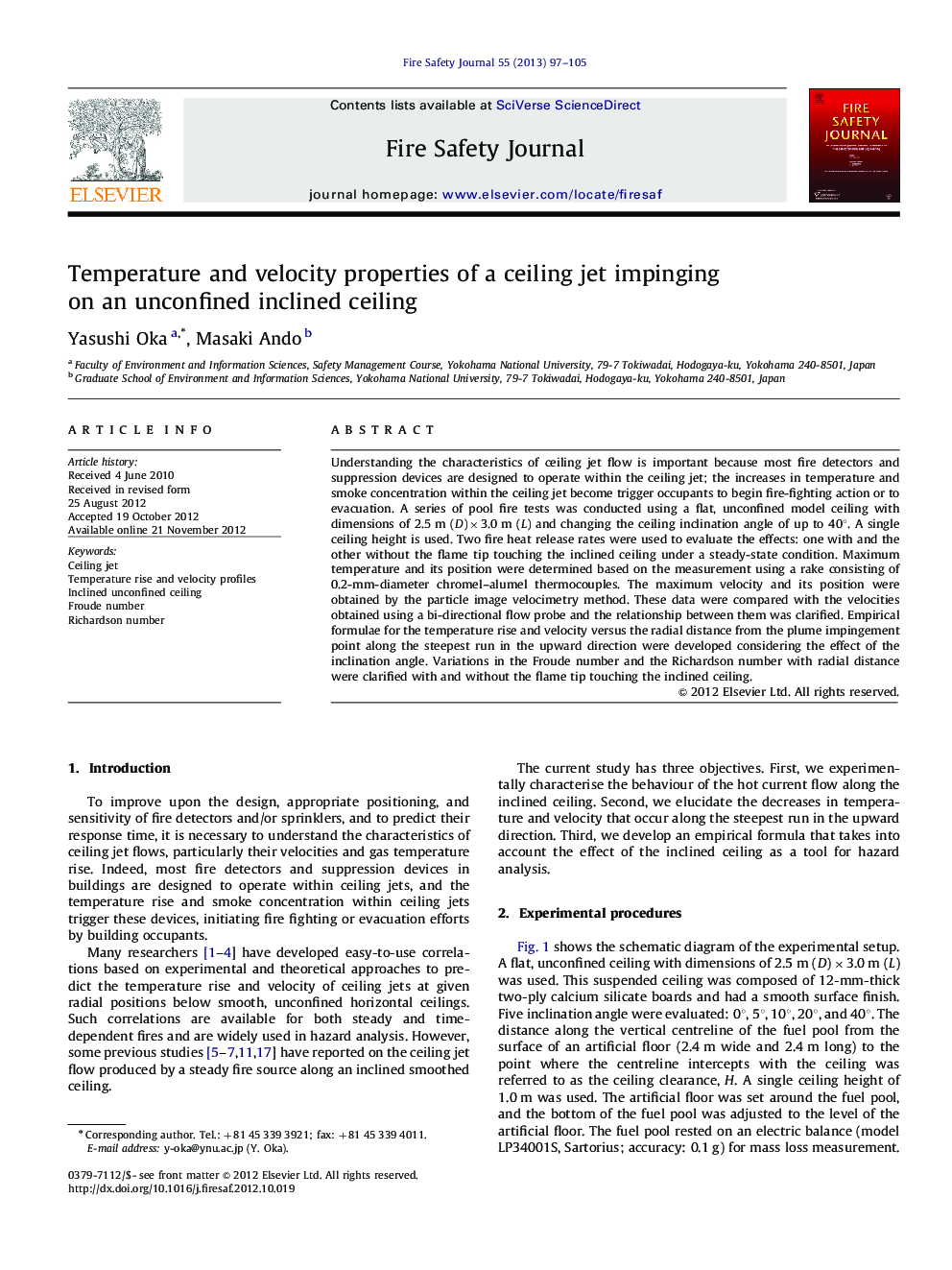| Article ID | Journal | Published Year | Pages | File Type |
|---|---|---|---|---|
| 270085 | Fire Safety Journal | 2013 | 9 Pages |
Understanding the characteristics of ceiling jet flow is important because most fire detectors and suppression devices are designed to operate within the ceiling jet; the increases in temperature and smoke concentration within the ceiling jet become trigger occupants to begin fire-fighting action or to evacuation. A series of pool fire tests was conducted using a flat, unconfined model ceiling with dimensions of 2.5 m (D)×3.0 m (L) and changing the ceiling inclination angle of up to 40°. A single ceiling height is used. Two fire heat release rates were used to evaluate the effects: one with and the other without the flame tip touching the inclined ceiling under a steady-state condition. Maximum temperature and its position were determined based on the measurement using a rake consisting of 0.2-mm-diameter chromel–alumel thermocouples. The maximum velocity and its position were obtained by the particle image velocimetry method. These data were compared with the velocities obtained using a bi-directional flow probe and the relationship between them was clarified. Empirical formulae for the temperature rise and velocity versus the radial distance from the plume impingement point along the steepest run in the upward direction were developed considering the effect of the inclination angle. Variations in the Froude number and the Richardson number with radial distance were clarified with and without the flame tip touching the inclined ceiling.
► A correlation describing the radial dependence of temperature was developed. ► A correlation describing the radial dependence of velocity was developed. ► Relationship between velocity and temperature rise is examined. ► Radial dependence of Fr and Ri was estimated.
